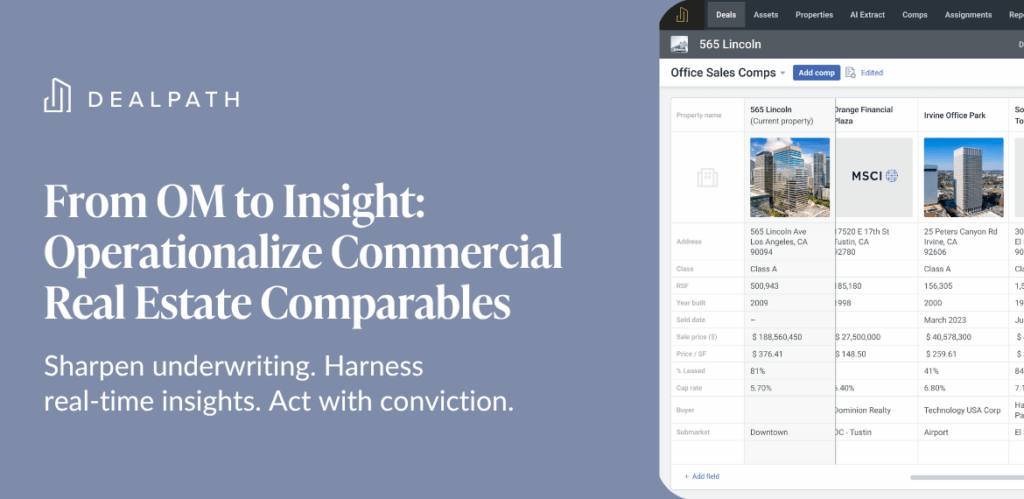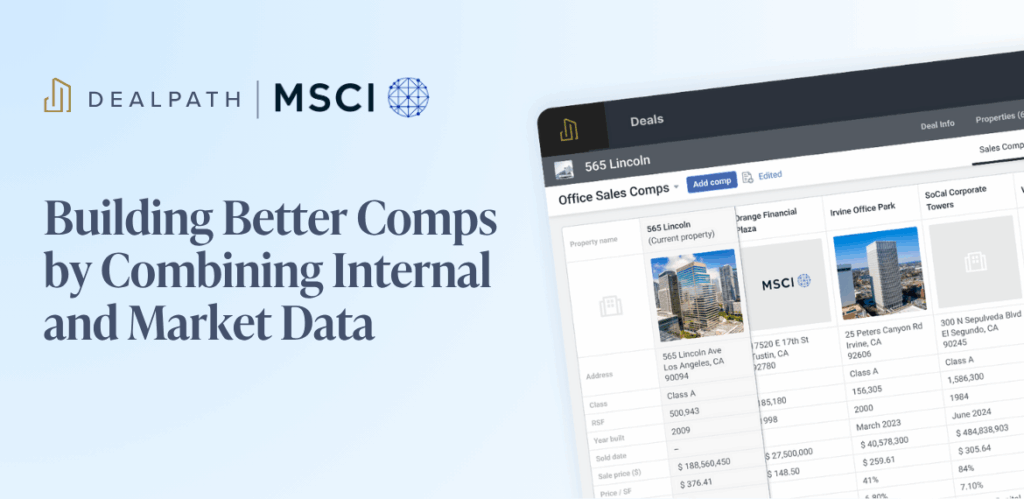From thoughtful underwriting to comprehensive due diligence, real estate investors employ a number of tactics and strategies to surface profitable deals with the right risk profile. Net lease real estate agreements, in which credit tenants take on some property ownership costs, are a popular method for institutions to generate stable, low-risk cash flow over the long term without incurring operational expenses.
In this blog post, we’ll explain what a net lease is in commercial real estate, the pros and cons of this agreement and more.
What Is a Net Lease in Commercial Real Estate? (Definition)
Unlike a gross lease, a net lease in commercial real estate requires lessees to pay some or all costs associated with property ownership in addition to rent, which is often reduced. This includes some combination of taxes, maintenance and insurance fees. Net leases have longer terms than other lease agreements, typically lasting at least 10 years, and often 15.
To ensure timely payment throughout this term, net lease landlords are typically careful to screen tenants for high credit and other signals of stability. Lease agreements also tend to include rent appreciation bumps, or escalator clauses, which account for inflation. Between long lease terms and operational cost obligations, net lease tenants behave similarly to property owners.
Benefits for Investors
For investors, commercial real estate net leases offer stable returns without incurring expenses typically associated with property ownership. Long lease terms eliminate risks like building vacancies, while shifting costs like insurance, taxes and maintenance to tenants. This also reduces time spent on administrative work, which is otherwise taxing for asset management teams.
Benefits for Tenants
For tenants, net leases offer a long-term space that can be customized based on their evolving needs. Despite the obligation to cover building-related expenses, tenants save on rent, which is generally reduced in light of these costs.
Single Vs. Double Vs. Triple Net Lease: Understanding the Differences
By definition, net lease real estate agreements require tenants to cover property expenses beyond rent. The scope of these obligations, however, can vary depending on the type of net lease agreement.
While tenants are financially responsible, property owners generally include these costs as part of rent. When buildings are occupied by more than one tenant, these costs tend to be divided based on square footage.
Single Net Lease
Single net lease real estate agreements defer some risk of property ownership to the tenant. In addition to rent costs, tenants typically pay property taxes as well. Like a gross lease, landlords would continue to cover maintenance and insurance costs.
Double Net Lease
Double net lease agreements are more common than single net leases. These agreements require tenants to take on even more building-related costs, often including property taxes and insurance premiums. Even with tenants shouldering these two major financial obligations, landlords must still cover maintenance costs.
Triple Net Lease (NNN)
Triple net leases, sometimes styled NNN, eliminate nearly all property ownership risk from owners, shifting the onus of building upkeep and administration entirely to tenants. Tenants cover everything from taxes, to insurance premiums, utilities, maintenance and more in a triple net lease real estate agreement. Consequently, tenants tend to pay reduced rent. Triple net leases tend to be longer than others, too.
Because tenants are essentially operating as owners, most triple net leases are signed to only one tenant. Bondable triple net lease real estate agreements, which prevent tenants from severing ties due to unpredictable costs, are also called absolute net leases.
Pros and Cons of Net Lease Agreements for Real Estate Investors
Net leases can offer tremendous value for low-risk investors seeking stable, predictable returns. Conversely, they can be limiting to higher-risk investors seeking significant upside and high returns.
Pros of Net Leases
- Consistent, Stable Cash Flow: Net lease real estate agreements deliver predictable returns, with tenants locked into set monthly payments. Annual rent appreciation bumps can mitigate losses that could otherwise result from inflation.
- Lack of Risk: Long lease terms, high credit and lack of operational costs make net lease investments a low-risk venture. Unlike other real estate leases, investors do not have to contend with frequent vacancies. Investors are also insulated, to some degree, from increasing operating costs.
- Minimal Upkeep and Responsibility: By signing long-term leases and deferring responsibility to tenants, investors don’t have to expend resources on tenant satisfaction or routine check-ins.
- Flexibility to Sell: In the event that investors want to sell, real estate net leases can simply be transferred to new owners, like other leases. While buyer goals may vary, long-term leases can be appealing to investors seeking immediate, stable revenue.
Cons of Net Leases
- Low Risk Is Limiting: While many investors seek stability as a goal, opportunistic investors may struggle with locking in long terms. These long terms prevent investors from continuously adding value and capturing upside.
- Bespoke Spaces: Tenants that occupy spaces for as long as ten years tend to make changes in the building to better meet their needs, which can add complications if the tenant does not renew their lease. Leasing a bespoke space to a new tenant can prove challenging without new modifications.
How Four Springs Capital Trust Doubled AUM in 1 Year With Dealpath
Centralizing data with standardized deal workflows in one source of truth enabled Four Springs Capital Trust, a net lease-focused Real Estate Investment Trust (REIT), to double its AUM by evaluating a $20B pipeline.
Watch the on-demand webinar featuring Jared Morgan, SVP & Head of Acquisitions, to learn actionable steps your firm can take to close $500M in acquisitions.
Watch Now



